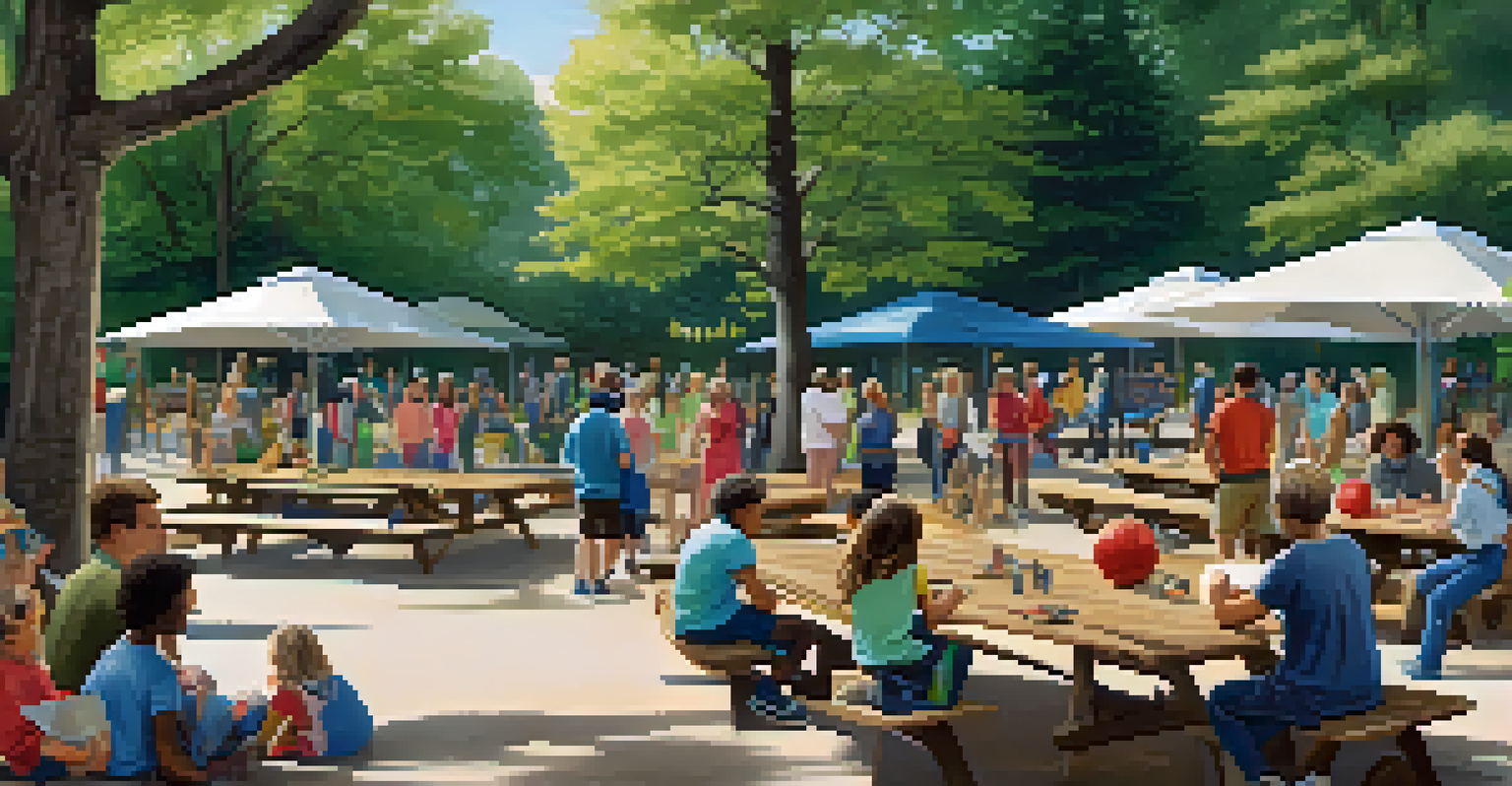Designing Outdoor Play Areas for Kids and Families

Understanding the Importance of Outdoor Play Areas
Outdoor play areas are vital for children's physical and emotional development. They offer a space for kids to engage in physical activity, which is crucial for their health and well-being.
Play is the highest form of research.
Moreover, these areas provide opportunities for social interactions, helping children build friendships and learn essential teamwork skills. When children play together, they learn to communicate, negotiate, and resolve conflicts.
Additionally, outdoor environments stimulate creativity and imagination. Whether it's climbing, swinging, or building, kids learn to explore their surroundings and come up with inventive ways to play.
Choosing the Right Location for Play Areas
Selecting the perfect spot for an outdoor play area is crucial. Ideally, it should be easily accessible to families but also offer a sense of safety and seclusion away from busy roads.

Natural shade is an asset, protecting children from the sun while they play. Look for locations near trees or consider installing shade structures to keep kids cool during hot days.
Outdoor Play Boosts Development
Outdoor play areas are essential for children's physical, emotional, and social development.
Lastly, think about the surroundings. A play area near a park can enhance the experience, allowing families to enjoy a full day of outdoor activities, from picnics to games.
Incorporating Natural Elements in Design
Integrating natural elements into play areas can create a more engaging environment. Features like logs, stones, and sand encourage imaginative play and exploration.
Children learn as they play. Most importantly, in play, children learn how to learn.
Natural play structures not only blend beautifully with the landscape but also promote sensory experiences. Children can feel the textures of different materials, enhancing their connection to nature.
Moreover, these elements can be used to teach kids about the environment, fostering a sense of responsibility toward nature. It’s a great way to introduce ecological concepts in a fun, hands-on manner.
Designing for Safety and Accessibility
Safety should always be a top priority when designing outdoor play areas. Use soft surfaces like rubber mulch or grass to cushion falls and minimize injuries.
Incorporating accessible features is essential to ensure all children can play together. This includes wheelchair-friendly paths and equipment designed for kids of all abilities.
Community Input Enhances Design
Engaging the local community in the design process ensures the play area reflects their needs and interests.
Regular maintenance checks are also crucial to keep play areas safe. Inspect equipment for wear and tear and ensure that the space is free from hazards, keeping it enjoyable for everyone.
Creating Varied Play Experiences
Variety is key when designing play areas. Incorporating different types of equipment—like slides, swings, and climbing structures—can cater to various interests and age groups.
Interactive elements, such as water features or musical instruments, can further enrich the play experience. These additions not only make the area more enjoyable but also invite children to explore in different ways.
By providing a range of options, you encourage kids to engage in diverse play styles, from active to imaginative play, which is essential for their overall development.
Engaging the Community in the Design Process
Involving the local community in the design process can lead to a more successful play area. Gather input from families, educators, and children on what they would like to see in the space.
Community meetings or surveys can help identify specific needs and preferences, ensuring the play area reflects the interests of those who will use it most.
Safety and Maintenance are Key
Prioritizing safety and regular maintenance is crucial for the longevity and enjoyment of outdoor play areas.
This collaborative approach not only builds a sense of ownership but also fosters community spirit, making the play area a beloved local asset.
Maintaining and Evolving Play Areas Over Time
Creating a play area is just the beginning; maintenance is key to its longevity. Regular inspections and maintenance can prevent issues and ensure safety for all users.
As children grow and their interests change, consider updating the equipment and features to keep the space relevant and engaging. This evolution can include new play structures or seasonal activities.

Additionally, gathering ongoing feedback from the community can help identify areas for improvement, ensuring the play area continues to meet the needs of families for years to come.